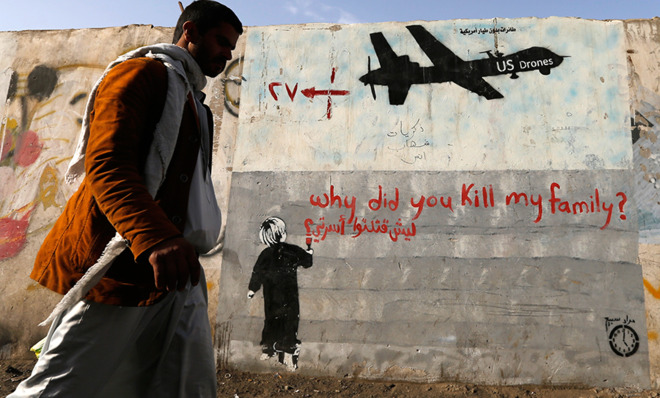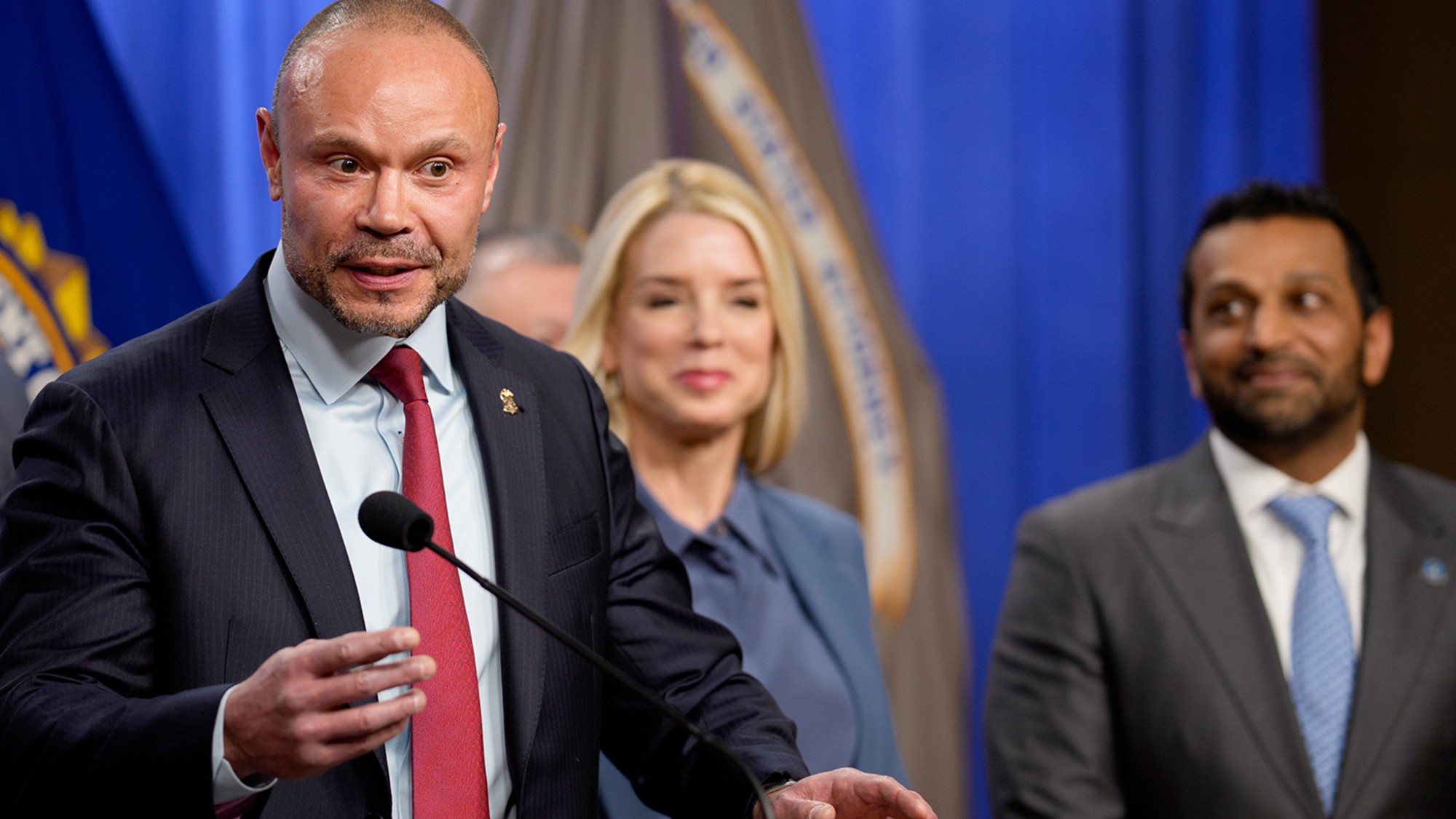The problem with hating killer drones
Critics are pointing out all the flaws with America's reliance on drone warfare. But what's the alternative?


Armed drones are terrifying. They can rain down hellfire without the targets even knowing they're in danger. And adding to the creepiness, the person pulling the trigger is usually thousands of miles away, watching from a control room somewhere in the American Midwest.
America's drone warfare has traumatized whole areas of Pakistan and Yemen, probably feeding anti-American fervor and possibly boosting terrorist recruitment efforts. And it's not hard to understand why.
A new report from British human rights group Reprieve suggests that, based on available evidence, as many as 1,147 people in Yemen and Pakistan, including children, were killed in U.S. drone strikes targeting 41 suspected terrorists on the top secret U.S. "kill list." Oftentimes it appears to take several attempts to kill a target. But hard numbers are hard to come by, along with just about every other detail regarding the U.S. drone warfare program — like who picks the targets, why, and what kind of evidence is needed to sign their death warrants.
The Week
Escape your echo chamber. Get the facts behind the news, plus analysis from multiple perspectives.

Sign up for The Week's Free Newsletters
From our morning news briefing to a weekly Good News Newsletter, get the best of The Week delivered directly to your inbox.
From our morning news briefing to a weekly Good News Newsletter, get the best of The Week delivered directly to your inbox.
If you want to get a sense of how terrible it feels to live under the buzzing of armed drones that may or may not send missiles your way, watch or read the congressional testimony of America-loving Yemeni activist Farea al-Muslimi, whose village was blasted by U.S. unmanned aerial machines.
And drone anxiety isn't restricted to areas haunted by the flying death robots — everybody from rural Coloradans to amateur filmmakers and A-list Hollywood celebrities are wondering about the legality of shooting down drones, and the FAA is struggling to come up with a workable policy for drones over America. Policymakers in Washington have to be worried about how to protect the U.S. from the armed drones inevitably being developed by hostile nations and groups.
In short, there are lots of good reasons to hate drone warfare. But the growing opposition to killer drones, especially in libertarian circles, faces a few pretty big obstacles.
The first is public opinion: In a 2013 Gallup poll, 65 percent of Americans supported launching "airstrikes in other countries against suspected terrorists" (majorities opposed using drones against terrorists in the U.S. or Americans abroad). A Pew poll from July found that 52 percent of Americans supported drone strikes against extremists in other countries — making the U.S. just one of three countries (out of 44 surveyed) with majority support for drone strikes (Kenya and Israel are the other two).
A free daily email with the biggest news stories of the day – and the best features from TheWeek.com
Some researchers argue that if Americans were more aware of the foreign civilian casualties from drone strikes, support for drone warfare would drop. Count me skeptical. Why? Let's look at the other big obstacle: If not drones, what?
Drones are relatively inexpensive and viciously effective. You can make a compelling argument for reining in America's war on Islamist terrorists altogether, but it's hard to imagine there being much political will to leave al Qaeda (and now Islamic State) alone. If the U.S. is going to hunt suspected terrorists, frankly, our non-drone options aren't particularly attractive.
The U.S. took a big risk launching a manned raid inside Pakistan to nab Osama bin Laden, and while Islamabad may tolerate (or even tacitly support) drone strikes, it's highly unlikely the nuclear-armed country would allow a de facto U.S. occupation of the Waziristan region. Legally questionable commando raids in Yemen or the other side of the Afghanistan border may lower civilian casualties, but they would certainly increase American fatalities.
With ISIS, the U.S. and its Arab allies are dropping bombs from traditional fighter jets, but there are still civilian casualties. And ISIS is not al Qaeda — it has hard targets and grouped militants to bomb. Counterterrorism is different.
Terrorists — a charged term, to be sure — typically try to blend in among civilians and noncombatants. That's one of their most powerful weapons. Drones kill innocent people by mistake, but if you want to see one possible alternative, watch the 1966 film The Battle of Algiers, about colonial France's brutal attempt to fight off an insurgency in Algeria's capital.
War is ugly and deadly. One of the great risks — and great political appeals — of drone warfare is that it shields all that death and mutilation from the country waging remote-control battle. Distancing fortunate warriors from battle has been a trend since the horrors of World War I trench warfare, and it poses a moral quandary. But while the Obama administration is clearly overstating the surgical precision of its drone strikes, drones don't seem to be any worse — and may in fact be better — than any other kind of warfare.
It makes sense to hate drones, just as it makes sense to hate war and death and terrorism. But to quote a song from the original Muppet Movie — and may Jim Henson's ghost forgive me —"there's somethin' irresistible-ish about 'em.... I hope that somethin' better comes along."
Peter has worked as a news and culture writer and editor at The Week since the site's launch in 2008. He covers politics, world affairs, religion and cultural currents. His journalism career began as a copy editor at a financial newswire and has included editorial positions at The New York Times Magazine, Facts on File, and Oregon State University.
-
 Pipe bombs: The end of a conspiracy theory?
Pipe bombs: The end of a conspiracy theory?Feature Despite Bongino and Bondi’s attempt at truth-telling, the MAGAverse is still convinced the Deep State is responsible
-
 The robot revolution
The robot revolutionFeature Advances in tech and AI are producing android machine workers. What will that mean for humans?
-
 Health: Will Kennedy dismantle U.S. immunization policy?
Health: Will Kennedy dismantle U.S. immunization policy?Feature ‘America’s vaccine playbook is being rewritten by people who don’t believe in them’
